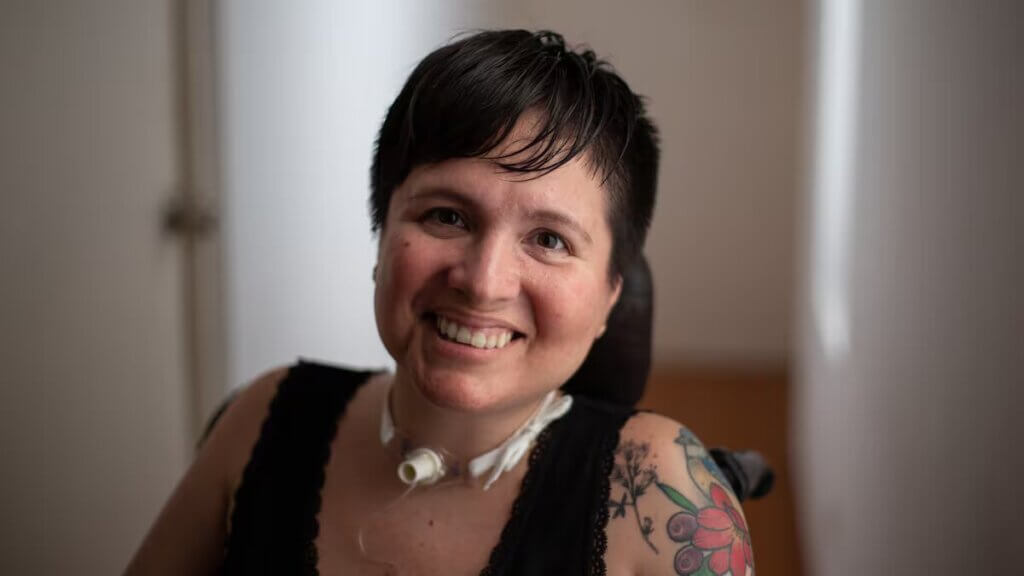Lima, Peru — On April 21, psychologist and activist Ana Estrada underwent euthanasia, a medical procedure that deliberately ends a patient’s life to limit suffering. While not legal or explicitly outlined in Peru’s Constitution, Estrada’s euthanasia was authorized by the country’s Supreme Court in this particular instance.
A statement shared on Monday to Peru Reports by Josefina Miró Quesada, Estrada’s lawyer, states that she “died on her own terms, in accordance with her idea of dignity and in full control of her autonomy until the end.”
“Ana’s fight for her right to a dignified death has made visible and sensitized thousands of Peruvians about the importance of defending this right. Her struggle transcended the borders of our country and has made a mark in the region,” said the lawyer.
Estrada was a 47-year-old Peruvian euthanasia activist who suffered from polymyositis —an incurable disease that left her confined to a wheelchair— and who, since 2019, with the support of the Ombudsman’s Office, had been demanding the right to euthanasia from the government.
Euthanasia is illegal in Peru. However, in 2022, the Judiciary issued a ruling in favor of Estrada to “disapply” Article 112 of the current Penal Code, which punishes with a prison sentence of no more than three years anyone who “out of pity, kills an incurably ill person.”
Last February, the Superior Court of Justice of Lima ordered the Social Health Insurance (EsSalud) and the Ministry of Health (Minsa) to respect Estrada’s decision.
Recently, EsSalud also stated that it was not necessary to carry out an additional psychological evaluation beyond the one conducted in October 2023, and decided that Estrada could designate a trusted person to give consent by signing. The euthanasia procedure followed a protocol approved by EsSalud.
According to Miró Quesada, Ana’s case has allowed the Peruvian justice system to recognize “for the first time in its history that we all have the right to die with dignity.”
“This important precedent allowed other people to have their right recognized to refuse medical treatments that keep them alive in order to also have a dignified death,” the document reads.
In statements to Peru Reports, Dr. Augusto Meloni, a physician and priest, and former vice president of the Executive Council of the World Health Organization, expressed solidarity with Ana’s family in this difficult time but advocated for “palliative care” instead of euthanasia, which he considers “murder.” According to Article 112 of the Peruvian Penal Code, this practice is classified as “mercy killing.”
“Palliative care helps people cope with these difficult situations. Science, technology, and medicine have made great strides in this field,” he commented, adding that these types of care should also include “a spiritual dimension” and support for facing death.
In 2020, Estrada told the BBC that the “quest for euthanasia” had “given her a reason to live.”
“For me, having a dignified life means having freedom, autonomy, decision-making about yourself,” she said at the time. “I want to have control over my time, my body, to be able to choose when to die, because it’s about the freedom to choose.”
Estrada’s case is unique in Peru, as her case was elevated to the Supreme Court, the country’s highest judicial body. The Court’s decision has only affected Estrada’s case, preventing professionals involved from being prosecuted. Other similar cases will have to resort to the judiciary until there is jurisprudence and laws regarding euthanasia in Peru.
The post Activist Ana Estrada becomes first person to undergo euthanasia in Peru appeared first on Perú Reports.
The post Activist Ana Estrada becomes first person to undergo euthanasia in Peru appeared first on Latin America Reports.



